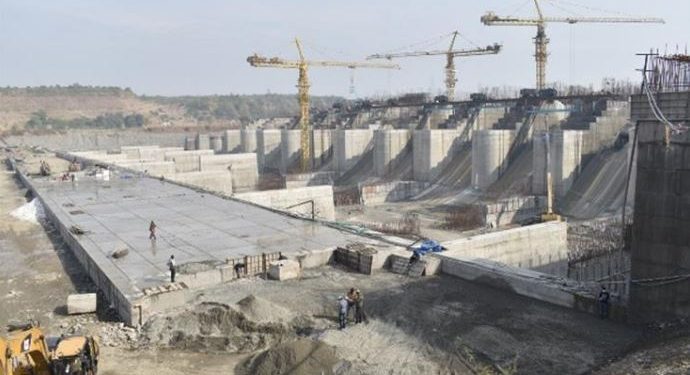· Project to start generating power in 2023, says Sarkaria
· To generate 208MW power besides providing irrigation facilities in 37000 Hectares
Chandigarh, December 31:
In a bid to further improve the irrigation system and clean power generation in the state, Punjab Water Resources Department has completed 60 per cent work of Shahpurkandi Main Dam despite the COVID situation during the year of 2020.
Punjab Water Resources Minister Mr. Sukhbinder Singh Sarkaria said that the department resumed the construction work, which was halted due to unprecedented nationwide lockdown imposed to contain the spread of the pandemic, on the Shahpurkandi Dam on April 29, 2020 after some relaxations were given in the lockdown. Now, the work of the project is going on in full swing and almost 60% work of the Main Dam has been executed.
Expressing hope to start the filling of the reservoir of Shahpurkandi Dam Project by November 2022, he said that the project will hopefully start generating power in 2023. On completion, this project would generate 208MW power besides letting Ranjit Sagar Dam to run as a peaking station. While creating tourism potential and improving the socio-economic conditions of the people in this border area, it would also provide intensive irrigation facilities in 37000 Hectares in Punjab and J&K, he added.
Chief Engineer Shahpurkandi Dam project Mr. S.K. Saluja said that an amount of Rs.170crore has been spent during the current financial year up to 31-12-2020 and expenditure of Rs.1233crore has been spent on the project against approved project cost of Rs.2715crore. The work of Power House will be started in January 2021 and the work on J&K side would also be taken up in January next year after the land acquisition process is completed by J&K Govt. This year, the Forest clearance for areas falling in Punjab and J&K has been obtained from MoEF, New Delhi, he added.
Notably, the Shahpurkandi Dam Project is being constructed on river Ravi 11Km downstream of Ranjit Sagar Dam and 8Km upstream of Madhopur Headworks in Pathankot District. It will reduce the outflow of the river water to Pakistan.








